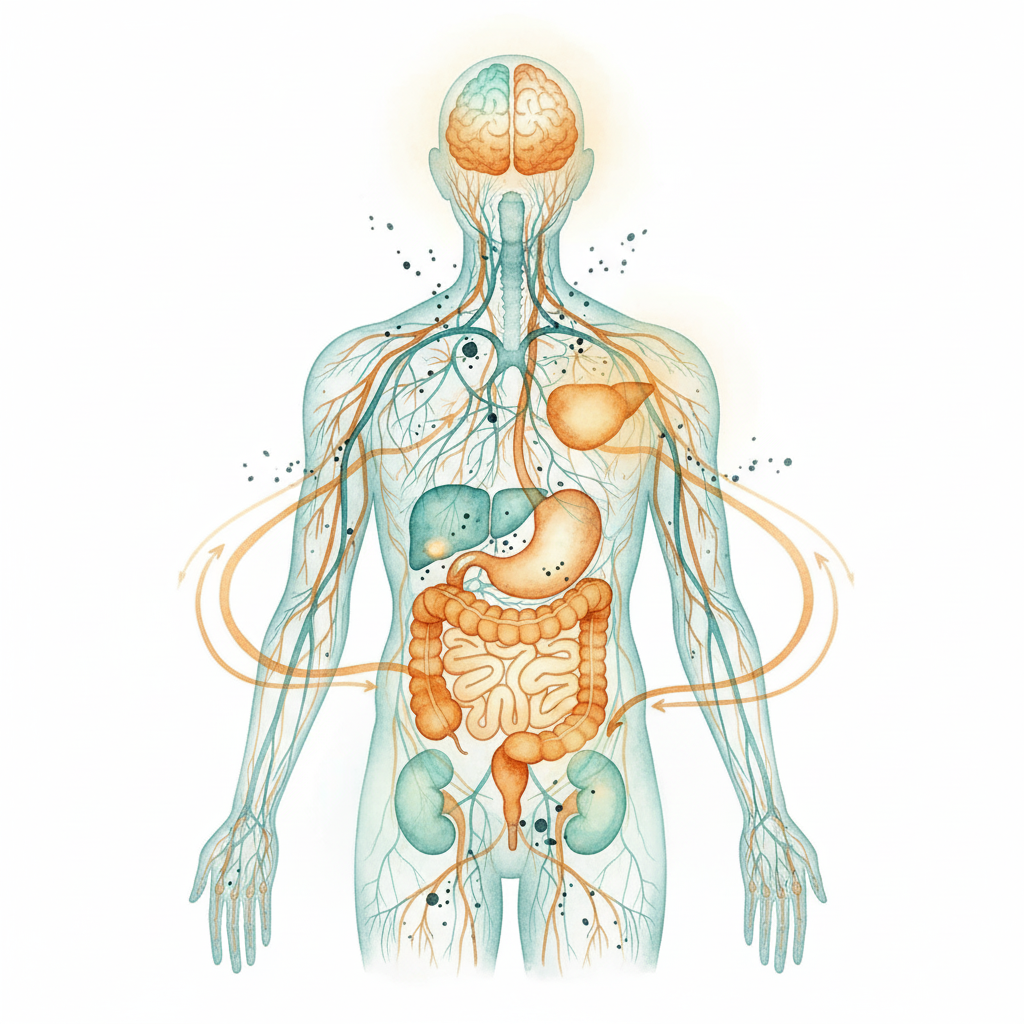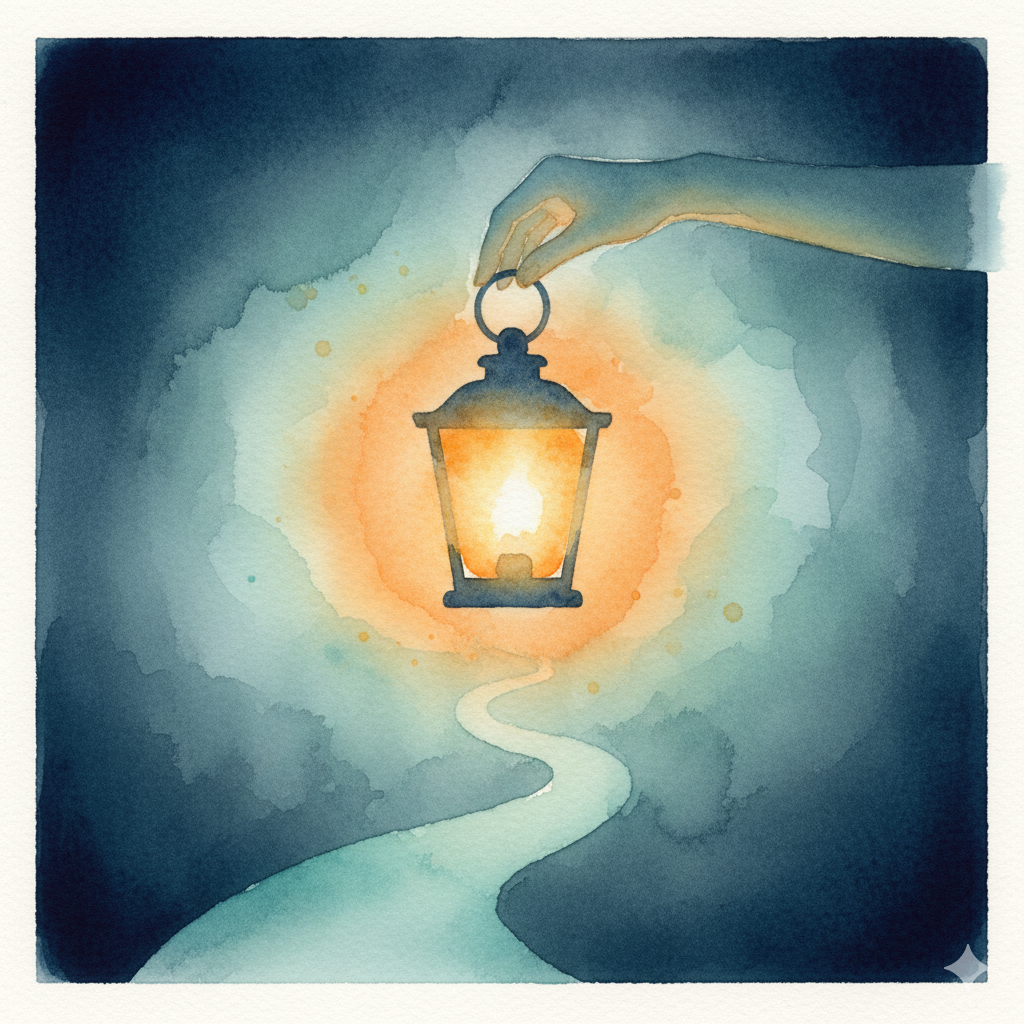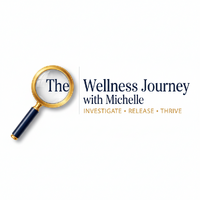
🌿 When Home Becomes the Hidden Enemy: My Journey from Mold Illness to Thriving Again
Your body is wise—we listen, simplify, and guide.
Part 1: When My Safe Haven Became My Silent Enemy - How I discovered hidden mold in my home
Part 2: When My Body Became a Stranger to Me - Understanding mold illness symptoms
Part 3: Tearing Down to Build Back Up - What real remediation looks like
Part 4: From Surviving to Thriving - My recovery journey ← You are here
📖 Catching Up: What Happened in Parts 1-3
In Part 1: When My Safe Haven Became My Silent Enemy, I shared how I discovered hidden mold throughout my seemingly perfect home—behind shower tiles, beneath a balcony with no visible water damage, and in my garage refuge. For nearly two decades, mold had been slowly poisoning me while doctors treated my symptoms but never asked about my environment.
In Part 2: When My Body Became a Stranger to Me, I walked you through the science of mold illness—how mycotoxins hijack your immune system, gut, brain, skin, and hormones all at once. I explained why it mimics so many other conditions, and how I finally confirmed through testing that mold was affecting my body at a cellular level.
In Part 3: Tearing Down to Build Back Up, I took you through six months of professional remediation—the demolition, the discoveries, the delays, and the emotional toll of watching my sanctuary systematically torn apart. I shared what real mold remediation looks like when it's done right, and why removing the source is just the first step.
Now in Part 4, let's talk about what comes after the environment is clean: the long road to actually feeling well again.
New to this series? Start with Part 1 to understand how this journey began.
From Surviving to Thriving
"Passing clearance wasn't the finish line. It was the starting line."
If you're recovering from mold illness, you might be wondering: how long does mold detox take? What does cellular detox from mold actually involve? Why do you still feel sick after mold remediation?
I asked all these questions too. Here's what I learned about mold illness recovery—the cellular detox work required, the actual timeline, and what it takes to heal after years of mycotoxin exposure.
May 15, 2024.
The text came: the upstairs bedroom and bathroom—the final areas—had passed clearance testing.
I felt relief wash over me.
Proof that the months of demolition, the noise, the dust, the chaos had actually worked. The contamination was gone. The air was clean. Every space that had been poisoning me for years was finally safe.
There was excitement too.
We'd reached the end. No more discoveries. No more "we found something else."
But there was also stress.
Because I knew reconstruction was still ongoing. My home wouldn't be fully mine again for weeks.
And underneath all of that? A quiet realization that changed everything.
The environment was finally clean.
But I still felt terrible.
That wasn't defeat—it was clarity. Now I could finally do the cellular detox work properly, without constant re-exposure sabotaging every attempt. The real healing could begin—and actually stick."
The Relief—and the Reality
Standing in my home after that final clearance, breathing air that had passed independent testing in every single area, I understood something crucial:
Removing the mold didn't remove what it had done to my body.
I'd been working with my health coach since mid-2023—months before remediation even began. We'd started cellular detox work together, trying to support my body while I was still living in contamination.
But here's what I learned: you can't effectively detox when you're being re-exposed every single day.
It's like trying to bail water out of a boat while someone's still pouring it in. You might make some progress, but you'll never get ahead.
Now, for the first time in years, that constant re-exposure had stopped.
The thought that ran through my mind wasn't "Finally, I'm healed."
It was: "I can finally do the cellular detox and mold recovery work properly. I can work on my body without it being overburdened by constant toxic exposure."
The real healing work could finally begin—and actually stick.
Your symptoms are clues. Mine had been screaming "toxic exposure" for years. Now I could finally follow those clues without being re-poisoned daily.

What I Expected—And What I Had to Investigate Next
Through working with my health coach, I'd learned enough to know this wasn't going to be instant.
I didn't expect to feel dramatically better overnight. I knew my gut was damaged, my detox pathways were overwhelmed, and my immune system had been in fight mode for years.
That doesn't just reset because the air cleared.
But I also knew something I hadn't known before remediation began:
The light at the end of the tunnel was shining a lot brighter.
For the first time, I had a real foundation to build on. The environment that had been sabotaging every healing attempt was finally addressed.
Now the question was: what would my body need to actually recover?
Something had been overlooked for years—and now I could finally address it. Not just the mold in my home, but the mycotoxins stored in my body.
Why Removing Mold Isn't Enough: Understanding Mycotoxin Storage
Here's the misconception I had to unlearn:
I thought once the mold was gone, my body would just bounce back.
Like flipping a switch. Remove the toxin, feel better.
Simple, right? Wrong.
Years of mycotoxin exposure had done damage that didn't magically reverse when the air cleared.
The science I learned:
Mycotoxins are lipophilic—they love fat. That means they get stored in fatty tissues throughout your body: your brain, your nervous system, your organs, your cell membranes.¹
Your body tries to eliminate them through your liver and kidneys. But when those pathways are overwhelmed—which mine absolutely were after years of constant exposure—the toxins just stay put. Stored. Waiting.²
Removing the environmental source stops new toxins from coming in. But it doesn't remove what's already accumulated in your tissues.
On top of that, the damage those toxins caused to my gut lining, my immune system, my hormone balance, my nervous system—that doesn't heal instantly either.³
My personal truth:
May 2024: Remediation complete, clearance passed, house finally safe.
My symptoms? Still there.
The crushing fatigue. The unpredictable gut. The brain fog. The weight my body wouldn't release.
I wasn't being re-exposed anymore—that sweatshirt incident taught me my body could now recover from acute exposures. But I was still carrying years of toxic burden that my body hadn't been able to eliminate.
Your symptoms are clues. Mine were telling me: the environment is fixed, but your body still needs help.
The environment was fixed. My body still needed support for cellular healing from mold.
That's when the real work began.

Investigating What My Body Needed: The Foundation of Mold Illness Recovery
Before I could tackle the stored toxins, my body needed to be ready. You can't detox effectively when your basic systems aren't functioning properly.
My health coach helped me understand something critical: cellular detox isn't the first step. It's what you do after you've prepared your body to handle it.
Here's what that preparation actually looked like—and how I used a Good→Better→Best approach to build momentum without chasing perfect.
1. Hydration & Mineral Support
This sounds almost too simple, but it's foundational.
Your cells can't detox without proper hydration. Toxins move out of tissues through your lymphatic system, your bloodstream, and eventually through your kidneys and bowels. All of that requires water.
But it's not just about drinking more water—it's about cellular hydration, which requires minerals.
What I did:
-
Increased clean, filtered water intake
-
Added mineral support (because years of stress and toxic burden had depleted my mineral stores)
-
Paid attention to how my body was actually absorbing and using the water, not just consuming it
My Good→Better→Best approach:
-
Good: Drinking more filtered water consistently throughout the day
-
Better: Adding mineral support to help my cells actually use the water
-
Best: Paying attention to how my body was absorbing water—adjusting based on energy levels, how I felt, and what I noticed
Starting with Good was enough to begin supporting my detox pathways. I didn't need to be perfect.
Why it mattered:
Without adequate hydration and minerals, my detox pathways couldn't function. Toxins would just recirculate instead of being eliminated.
2. The Cellular Healing Diet for Mold Recovery
Through my health coach, I learned about the cellular healing diet—a structured approach to eating that supports your body's natural detoxification while reducing inflammation.
This wasn't another elimination diet based on restriction. This was eating to support cellular function and repair.
What I did:
-
Followed the cellular healing diet approach
-
Focused on organic, grass-fed, pasture-raised foods (cleaner sources while my body was trying to clear toxins)
-
Removed inflammatory foods that were keeping my gut damaged
-
Prioritized nutrient-dense foods that supported detoxification
My Good→Better→Best approach with food:
-
Good: Started by removing the most inflammatory foods (processed foods, refined sugar, inflammatory oils)
-
Better: Switched to organic for the "dirty dozen" foods I ate most often
-
Best: Prioritized grass-fed, pasture-raised, and wild-caught sources when possible
Some days Good was all I could manage—and that was exactly right. Building momentum, not chasing perfect.
Why it mattered:
My body needed the right fuel to repair damage, support detoxification, and rebuild cellular function. The cellular healing diet gave my cells what they needed to actually heal.

3. Supporting Drainage Pathways
You can't detox if your drainage pathways—the routes toxins use to leave your body—are blocked or sluggish.
Think of it like a clogged drain. You can keep adding water, but if the drain isn't open, nothing moves out. It just backs up.
What I did:
-
Supported lymphatic movement through gentle activity
-
Made regularity a priority (because if your bowels aren't moving daily, toxins get reabsorbed)
-
Focused on supporting liver and kidney function
Why it mattered:
Mobilizing toxins from tissues is only helpful if they can actually leave your body. Otherwise, they just redistribute and make you feel worse.3⁴
4. Binders: The Missing Piece in Mold Detox
Here's what most people don't understand about detoxing from mold: you need binders.
When your body mobilizes mycotoxins from your tissues, those toxins move into your bloodstream and digestive tract. Without something to bind them and escort them out, they can get reabsorbed—creating a toxic recirculation that makes you feel worse, not better.⁴
Binders attach to the toxins in your digestive tract and carry them out through your bowels.
Why binders are so important:
-
They prevent toxin reabsorption
-
They reduce the toxic burden on your liver
-
They help you actually eliminate what your body is working so hard to mobilize
-
They make the difference between feeling worse during detox and actually making progress
My experience:
Binders were non-negotiable in my mold recovery plan. They were the safety net that allowed my body to release stored toxins without getting re-poisoned by them.

The key message:
I couldn't jump straight to cellular detox work. I had to prepare my body first—support hydration and minerals, follow the cellular healing diet, open drainage pathways, and use binders to safely eliminate toxins.
This foundational work created the conditions my body needed for the deeper detox work to actually be effective—and safe.
Some days Good is the bravest step. And that's exactly where real healing begins.
My Cellular Detox Journey: Healing from Years of Mold Exposure
Once the foundation was in place—hydration, minerals, cellular healing diet, open drainage pathways, and binders ready—the real work began.
Cellular detox isn't a quick cleanse. It's a structured, stepwise process of helping your body release stored toxins from tissues, bind them safely, and eliminate them without overwhelming your already-stressed systems.
Here's what the actual cellular detox timeline looked like.
What My Mold Detox Plan Actually Involved
The Mold Recovery Approach: My health coach guided me through a specific mold detox plan designed to mobilize mycotoxins from fatty tissues where they'd been stored for years.
This involved:
-
Targeted supplements that supported cellular membrane repair
-
Binders taken at strategic times to catch mobilized toxins
-
Supporting my liver and kidneys as they processed what was being released
-
Adjusting the approach based on how my body responded
The Timeline: I'd started this work in mid-2023—before remediation even began. But it wasn't until after clearance passed in May 2024 that the recovery plans could really work without constant re-exposure sabotaging progress.
The intensive phase lasted several months. Not weeks. Months.
What Mold Illness Recovery Actually Felt Like: The Real Timeline
Here's what nobody tells you: healing isn't linear.
The challenging moments:
There were days I felt worse before I felt better. That's what happens when your body mobilizes toxins—if drainage isn't perfect or you're releasing faster than you can eliminate, you feel it.⁴
I had moments where I wanted to quit. Where I questioned if this was even working.
But here's what kept me going: those hard days weren't failure—they were proof my body was finally mobilizing what had been trapped for years. Every challenging moment meant progress was happening, even when it didn't feel like it.
My health coach kept me steady. She'd remind me: "Your body is doing what it needs to do. This is progress even when it doesn't feel like it."
The signs something was working:
My skin had already healed after remediation—that was the first victory.
But the deeper shifts took longer:
-
Energy started returning—not overnight, but gradually
-
Brain fog began lifting
-
My gut started stabilizing (this took the longest)
-
The weight my body had been holding finally started releasing
How long before I truly felt different?
Months. Not days or weeks. Real cellular healing takes time.
By late 2024, I could feel the difference. Not perfect—I'm still on this journey—but worlds better than where I'd been.
The crushing fatigue? Manageable. The digestive chaos? Predictable. The brain fog? Occasional instead of constant.
I wasn't just surviving anymore. I was starting to thrive.
Your symptoms are clues. Mine had been pointing to toxic overload for years. Now, finally, I was following those clues to actual healing.

Beyond the Physical: The Emotional Impact of Mold Illness Recovery
What science doesn't capture is what it feels like to get yourself back.
The research papers can tell you about mycotoxin clearance rates and inflammatory markers. But they can't explain the moment you realize you recognize yourself again.
Something had been overlooked—not just in my home, but in how mold illness steals your sense of self.
Recognizing Myself Again
The rage and mood swings that had taken over? They gradually subsided as the toxins cleared.
I stopped snapping at people. Stopped hating myself for reactions I couldn't control. Stopped feeling like a stranger in my own body.
The emotional transformation was just as profound as the physical one—maybe more so.
Here's what I learned:
For years, I'd thought I was the problem. My personality. My inability to cope. That something was inherently wrong with me.
Learning that my brain chemistry had been hijacked by toxic exposure? That freed me from years of shame.
I wasn't a bad person. I was a poisoned person.
And now, slowly, I was healing.
Your body knows what's wrong. Mine had been trying to tell me through every mood swing, every outburst, every moment I didn't recognize myself. I just hadn't understood what it was saying.
The Transition That Scared Me
In fall 2024, my health coach told me she was leaving the field.
After more than a year together—through discovery, remediation, and recovery—I had to say goodbye to the person who'd helped me investigate what had been hidden.
She'd really listened to me. Listened without judgment.
I felt safe to talk to her about what was going on deep inside of me—the rage I didn't recognize, the shame I carried, the fear that something was inherently wrong with me. She created space for me to not be fine.
I was scared. She knew exactly what I'd been through. She knew the full story—not just the mold, but the emotional toll it had taken.
But she ensured a seamless transition to another coach who understood mold illness. And even in leaving, she made sure I wasn't alone.
Building momentum, not chasing perfect. Even my coaching relationship wasn't perfect—but it kept moving forward. That's what mattered.
Learning to Trust My Body Again
After years of my body feeling like the enemy—attacking foods I'd always eaten, reacting to environments that didn't bother anyone else, betraying me with symptoms I couldn't control—I had to rebuild trust.
My body had been protecting me the only way it knew how.
Every symptom was a message: Something is wrong. Pay attention.
I'd spent years trying to silence those messages with medications and restrictions. Now I was finally listening.
And my body? It was responding.
Your symptoms are clues. Looking back, I can see how every single one was pointing to the same thing: toxic overload from an environment that was slowly poisoning me.
The investigation took years. But following those clues is what finally led me to healing.

Mold Illness Recovery: Where I Am Now (18 Months Post-Remediation)
November 2025. Nearly two years after remediation began. A year and a half since clearance passed.
Here's where I honestly am:
What's Resolved
-
The skin issues that plagued me for years? Gone.
-
The crushing, debilitating fatigue? Manageable energy most days.
-
The brain fog that made me feel like I was thinking through cotton? Occasional instead of constant.
-
The rage and mood swings that made me unrecognizable? Subsided.
These weren't small changes. These were getting my life back.
What I Still Manage
My gut is healing, but it's a process. Years of mold damage don't reverse overnight—and I discovered something new in 2025 that explained why progress was slower than expected.
The investigation continues:
Through HTMA (Hair Tissue Mineral Analysis), I found elevated lead and chlorine showing up in my body. The source? The water purification system I'd installed. Ironically, trying to create the "perfect" water ended up introducing new problems.
But here's what matters: I caught it. Because I'd learned to listen to my body's clues and investigate when something felt off. Simple swaps—bypassing that system—made a real difference. That's what environmental awareness looks like in practice.
I've since bypassed that filtration system and I am working on addressing this new exposure.
This is why I tell clients: environmental investigation doesn't end. Your body will keep giving you clues, and sometimes healing reveals new layers that were masked by the bigger issues.
Your symptoms are clues. Mine led me to mold. Then to water contamination. Following each clue has been essential to understanding what my body actually needs.
I'm continuing to rebuild my energy reserves, and now I understand why it's taking longer than expected.
I pay attention to my environment in ways I never did before—and when something feels off, I investigate.
My Maintenance Approach After Mold Recovery
Building momentum, not chasing perfect. This is what sustainable mold illness recovery actually looks like:
-
I continue supporting my body with quality nutrition—organic, grass-fed, pasture-raised
-
I maintain awareness of my environment and act quickly if symptoms flare
-
I travel with an air purifier to horse shows
-
I trust my body's signals now instead of dismissing them
I use a Good→Better→Best approach even in maintenance:
-
Good: Consistent clean eating and filtered water
-
Better: Adding mineral support and quality supplements when needed
-
Best: Environmental monitoring and quick action when my body sends signals
Some days I'm at Best. Some days Good is all I've got—and that's exactly right.
What Thriving Means to Me
I'm not "cured." But I'm thriving in ways I couldn't have imagined two years ago.
Thriving means:
-
Having the energy to show my horses
-
The mental clarity to build my practice
-
The confidence to trust my body again
-
The knowledge to investigate when something feels off
-
The tools to support my healing journey
Something was overlooked for years—mold, then water quality. But I learned to follow the clues my body was giving me. And that skill? That's what allows me to thrive instead of just survive.

From Healing to Helping: Becoming a Health Investigator
During this journey, something shifted in me.
I didn't just want to heal—I wanted to understand. Every recovery plan my health coach gave me, I researched. Every supplement, every mechanism, every pathway. I dove into the science of cellular detox, mycotoxins, gut health, environmental toxins.
The more I learned, the more I realized: this knowledge could help other people who were suffering the way I had.
That's when I started The Wellness Journey with Michelle.
Everything I learned through this journey now guides how I help others.
Why I Investigate Environment FIRST
I can't count how many practitioners I saw who never once asked about my home. Not one.
Now? It's one of my first questions.
Your symptoms might be screaming "environmental exposure" while everyone's looking at your food diary.
Most people focus only on food—but your environment matters just as much as what's on your plate.
What I Wish Every Practitioner Knew
Location-dependent symptoms while others stay healthy isn't genetics—it's exposure.
Multi-system symptoms that don't respond to standard treatment aren't "all in your head"—they're clues pointing to something bigger.
Something's been overlooked. And your body has been trying to tell you.
Your body is wise. It's been trying to tell you something. Sometimes we just need help translating its language.
Why I Ask the Questions Nobody Else Asks
Because I lived for years with answers hiding in plain sight while doctors treated symptoms in isolation.
I investigate the whole picture: food patterns, yes—but also air quality, water, home products, potential exposures, the spaces where you spend your time.
Because sometimes the missing piece isn't what you're eating. It's what's around you.

You Don't Have to Do This Alone
I started this series feeling betrayed by my body.
I'm ending it understanding my body was protecting me all along.
Every symptom—the gut chaos, the angry skin, the crushing fatigue, the mood swings I couldn't control—those were clues, not failures.
My body was the alarm system. It was never the enemy.
Your symptoms are clues. They're your body's way of telling you something needs attention.
If this journey resonates with you—if you've been doing everything "right" but still struggling, if doctors keep saying your labs are "normal" while you feel anything but, if you suspect something's been overlooked—you don't have to figure this out alone.
This is exactly what I help people investigate.
📞 Let's Talk
When we talk, we'll:
-
Discuss your symptom patterns and health history
-
Explore whether environmental factors might be involved
-
Identify what professionals you might need (testing, remediation, medical support)
-
Create a clear next step for investigation and recovery support
I provide nutritional coaching and lifestyle support—I don't diagnose medical conditions or perform remediation. But I help you investigate the whole picture and guide you through the recovery process when environmental factors have been affecting your health.
It's your body; I'm just helping to shine a light. 🔦
P.S. Take my free quiz: "Is Your Environment Making You Sick?" Get personalized insights about potential environmental triggers and what to investigate next.
💌 Join My Newsletter
Every Monday: One simple shift that moves the needle. Join others who are building momentum, not chasing perfection.
🌿 When Home Becomes the Hidden Enemy: My Journey from Mold Illness to Thriving Again
Your body is wise—we listen, investigate and guide.
Part 1: When My Safe Haven Became My Silent Enemy - How I discovered hidden mold in my home
Part 2: When My Body Became a Stranger to Me - Understanding mold illness symptoms
Part 3: Tearing Down to Build Back Up - What real remediation looks like
Part 4: From Surviving to Thriving - My recovery journey ← You just read this
References
-
Kraft S, Polte T. Mold, Mycotoxins and a Dysregulated Immune System: A Guide to Restoration. International Journal of Molecular Sciences. 2021;22(19):10419. Available at: https://www.ncbi.nlm.nih.gov/pmc/articles/PMC8508806/
-
Malvandi AM, Shahba S, Mehrzad J, et al. Metabolic Disruption by Naturally Occurring Mycotoxins in Circulation, Immunity and Reproductive System. Frontiers in Nutrition. 2022;9:915681. Available at: https://www.frontiersin.org/articles/10.3389/fnut.2022.915681/full
-
Gasperini AM, Faccenda D, Garcia-Cela E. Unravelling the impact of mycotoxins on gut health: implications for inflammatory bowel disease. Current Opinion in Food Science. 2025;64:101316. Available at: https://www.sciencedirect.com/science/article/pii/S2214799325000463
-
Hope J. A Review of the Mechanism of Injury and Treatment Approaches for Illness Resulting from Exposure to Water-Damaged Buildings, Mold, and Mycotoxins. The Scientific World Journal. 2013;2013:767482. Available at: https://www.ncbi.nlm.nih.gov/pmc/articles/PMC3654247/
Disclaimer: This content is for educational and informational purposes only and does not replace professional medical advice, diagnosis, or treatment. Always consult with qualified healthcare providers regarding medical concerns and before making changes to your health routine.


Comments